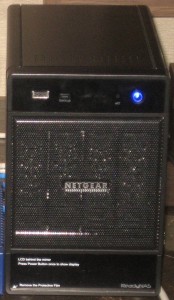Article
So What Ever Happened To Post-PC? | Gizmodo
My Comments
What was the “Post-PC” vision?
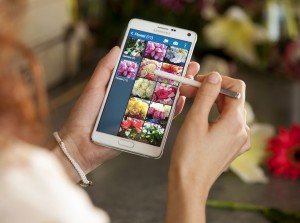
Samsung Galaxy Note 4 – an up-and-coming Android smartphone
The 2000s era saw the use of larger computers for regular Windows-based or Macintosh-based computing. Steve Jobs who was Apple’s visionary leader talked of the “Post-PC” era with computing centred around mobile devices such as the iPad and iPhone and “cloud+app” services which benefited from data held at one or more data centres and accessed using a lean client-side app running on the mobile device.
Current trends
Mobile-platform tablets
But current trends are leading towards mobile-platform devices like the recent iPads and Android tablets having the increased capability, and running more of the native apps with increased local functionality. Some of these apps can even run under their own steam without the need to regularly gain access to data.
Regular-platform computers being more compact, powerful and portable
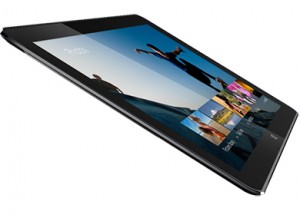
9mm fanless tablet concept with regular computing power
The regular-computer scene is heading towards equipment that is more compact, powerful and portable such as an increased variety of portable form-factors like the Ultraboooks and the convertibles or detachables. Even the desktop computers are becoming more compact with baseline equipment that is the size of a large book or an increasing number of “all-in-one” computers where the computing power is located in the monitor like the iMac.
Gaming laptops and mobile workstations
Some manufacturers have released laptop computers that are best described as either “gaming laptops” or “mobile workstations”. These have been highly optimised for performance and highly-responsive graphics that is required of highly-advanced graphics software or “full-on” games. Previously, this class of performance was only relegated to desktop computers but is showing up in the portable class of computers.
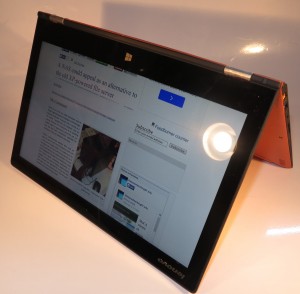
Lenovo Yoga 2 Pro convertible as a tablet
It is augmented with steps being taken to improve quality control when it comes to writing games for regular-computing platforms. This was because of issues relating to games studios turning out inefficiently-coded games that needed more to run or Apple and Microsoft not becoming proper gatekeepers for quality-control logos that affect game software.
A return to the late-1980s multiple-platform computing era
What was the late-1980s multiple-platform computing era?
The late 1980s microcomputing era saw the presence of multiple computer platforms in wide circulation: DOS/Windows/OS2 (IBM Compatible), Apple Macintosh, Commodore Amiga, Apple II and Atari ST. Different people preferred the different platforms for particular applications like having DOS/Windows for business-information-handling, the Apple Macintosh for desktop-publishing and the Commodore Amiga for gaming, desktop-video or interactive-user-interface design.
The multiple platforms that exist nowadays
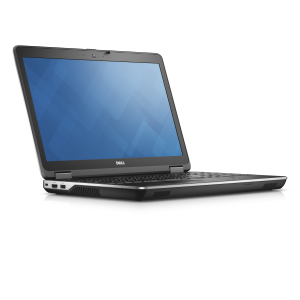
Dell Precision M2800 – an example of a mobile workstation
Now, we are starting to see the same number of regular and mobile computing platforms in circulation: Microsoft Windows, Apple Macintosh, Linux, Google Chrome OS, Apple iOS, and Google Android. The mobile platforms, especially Google Android, are being implemented in a desktop-style user environment with, for example, Philips releasing monitors that can run as standalone Android computers. Similarly, the Apple iOS and Android tablet platforms are appealing as platforms for baseline secondary computing tasks through people equipping tablets with USB or Bluetooth keyboards.
As for the hardware, we are seeing equipment that is based on the Intel x86/x64 microarchitecture or the ARM RISC microarchitecture with some specimens of both microarchitectures moving towards 64-bit variants of that microarchitecture. Some of these platforms are even showing up with hardware that has impressive graphics and gaming prowess such as the NVIDIA Tegra processors and the newer Apple processors for the mobile platforms along with Intel and AMD integrated-graphics systems that can stomach intense graphics work for the regular computing platforms.
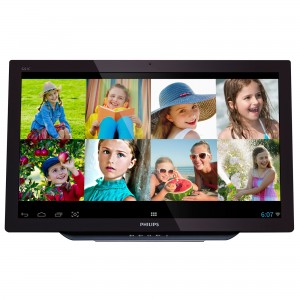
Philips Android-driven monitor
It is becoming increasingly common for households to become less “pure-play” when it comes to choosing the platform they use for their computing devices. For example, I have seen an increasing number of households use a Windows-based desktop or laptop along with an iPad and either an iPhone and/or an Android smartphone.
Business computing is facing this reality with having to implement “BYOD” (Bring Your Own Device) information-technology solutions and utilise “mobile-device-management” solutions and “corporate app stores” to assure that these devices are working to spec for secure computing in the workplace. It is also a challenge that is facing schools, airlines, hotels and others who are providing computer resources for the general public.
I do see it as a pity that Apple doesn’t seem to play properly and smoothly with other platforms, rather users either load up their Apple devices with apps that “bridge the gap” by offering DLNA functionality for example, or work around the various incompatibilities by using cloud services for example. Similarly, peripheral designers have to make sure their devices do pair properly with the Apple devices along with the Windows or Android devices that may support advanced paring techniques like NFC.
Conclusion
It is so easy for one computer visionary to determine what is to be the “status quo” but as the industry evolves with different computer devices and platforms and makes these devices and platforms more capable, it is hard to really determine what is to happen for consumer and business IT.





